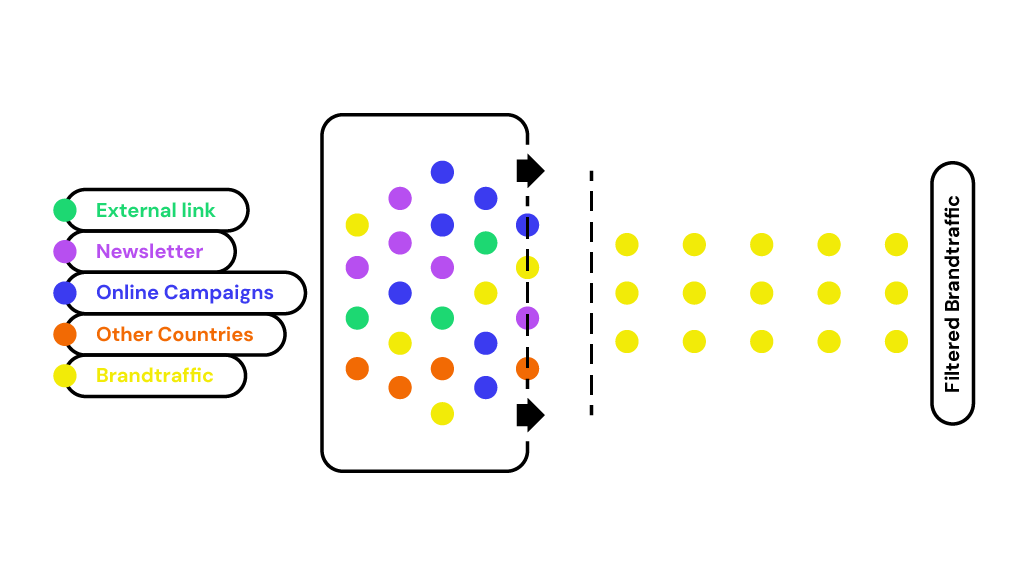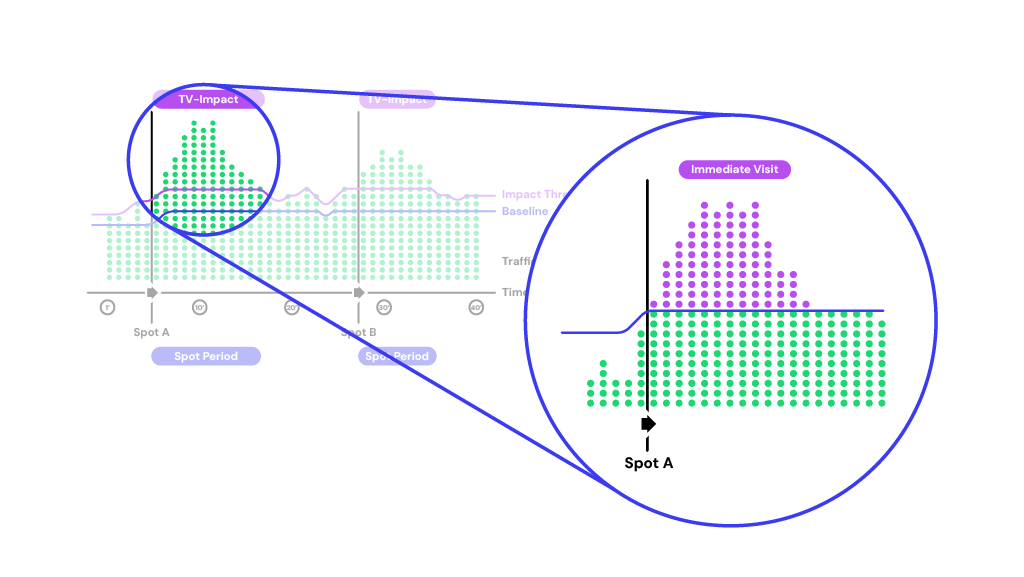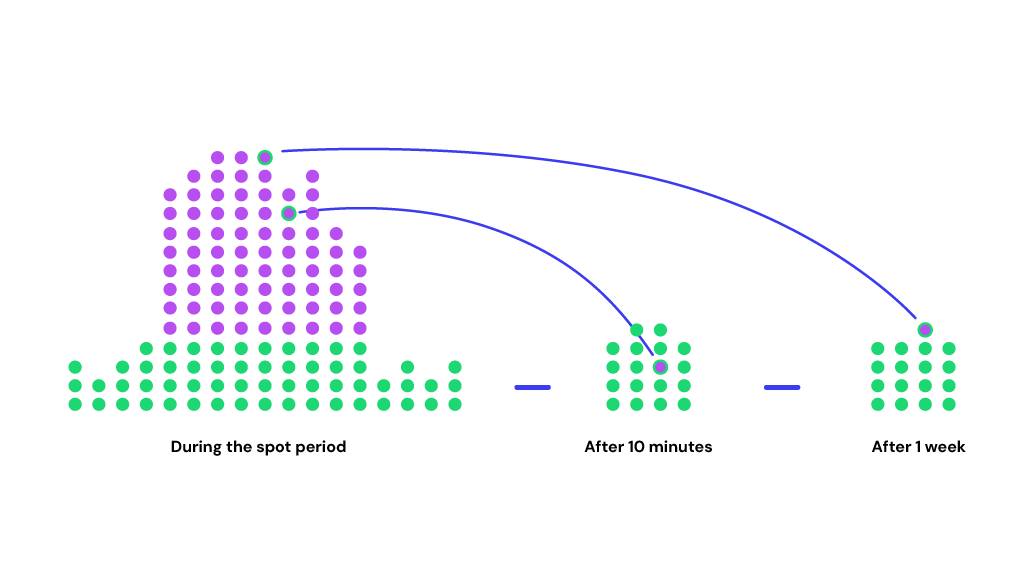At GladToBe, we can leverage advanced tracking technologies to measure and optimize performance TV campaigns, ensuring our clients feel secure about sharing their data and trusting the reported values. We are flexible in working with various established tracking/attribution providers such as Innovid (tvsquared), Attributy, XAD Spoteffects, Realytics, always with the aim to provide the best service to our clients. Our goal is to help brands understand the direct, short-term impact of TV advertising while building trust in TV as a significant source for further growth long-term.
Here, we would like to share with you a simplified explanation of how the TV tracking process works:
1. Filtering Traffic Tracking / attribution providers monitor data from your web or mobile presence to assess the response to your TV campaigns. Since not all traffic is TV-generated, the providers filter the data to include only sources with a high likelihood of being influenced by TV ads. Learn how performance TV advertising integrates with digital tracking for measurable results. This involves filtering by the region where the campaign aired and focusing on brand traffic, excluding sources like newsletters, online campaigns, and external links.

What is Brand Traffic? This refers to traffic likely generated by TV ads, based on user behavior such as typing in the website URL directly or using key terms from the TV ad in a search engine.
2. Calculating the Baseline To identify the impact of a TV spot, the providers first establish a baseline of normal traffic on your site. This baseline should be calculated dynamically, minute-by-minute during the spot period, factoring out normal variations such as time of day and seasonal changes.

What is a Baseline? This reflects the counterfactual level of traffic that would occur organically without any TV campaigns.
- Identifying TV Impact The providers focus on traffic changes within a specific spot period to determine the impact of TV ads. The duration of this spot period varies based on the peak size, ensuring that significant traffic changes are attributed correctly.
What is a Spot Period? A short window of time immediately following a spot airing, typically within 5-10 minutes, where most responses occur.
The providers only attribute changes in traffic to a TV spot if they significantly differ from organic fluctuations. An impact threshold, calculated dynamically, helps providers avoid false positives by setting a threshold above which traffic peaks are considered TV-generated.

What is Impact Threshold? The threshold above which traffic peaks are significantly larger than organic fluctuations and attributed to a specific TV spot.
4. Measuring TV Impact After identifying TV-driven traffic, the providers measure the impact by calculating the statistically significant changes in visits for each spot airing. Discover how TV advertising powers up e-commerce marketing by driving measurable uplift. By excluding users who would have visited organically (as established by the baseline), the providers provide a precise estimate of the uplift.
To create impactful campaigns, understanding what makes a great performance TV spot is essential.

- Allocating Overlapping Spots When multiple TV spots air simultaneously on different networks, the providers allocate the measured traffic among the spots based on their respective scores. Spots on popular channels with larger audiences receive higher scores and more traffic allocation.
What is a Spot Score? A score which reflects the impact probability of a spot, considering factors like the number of viewers, GRP, and pricing.

- Tracking and Allocating Conversions Visitors arriving as brand traffic during a spot period are tagged as likely TV-generated. The providers track conversions from these visitors over time, adjusting for organic traffic to provide a conservative estimate of conversions.
Because ROI or ROAS is the decisive metric for successful campaigns, the providers can share deeper insights into conversions. The providers can track both immediate and total conversions resulting from your TV campaign, enabling you to better understand your customers’ behavior. For overlapping spots, the providers can allocate the conversions according to the same ratio used for allocating immediate visits.

What are Immediate vs. Total Conversions? Immediate conversions occur within the first visit, while total conversions account for all subsequent conversions over a specified period.
7. Analyzing TV Campaigns Successful TV campaigns rely on informed decisions about channels, times, and days. The aforementioned providers can deliver insights into various parameters, such as CPV, response rate, and conversions, to help you manage and optimize your TV campaigns effectively. Explore how performance TV and e-commerce strategies combine to optimize campaign decisions. It’s important to note that our explanation provides a simplified overview of measuring TV impact. Each tracking/attribution provider may use their unique approach and technology to map the consumer journey and accurately attribute responses to TV.












